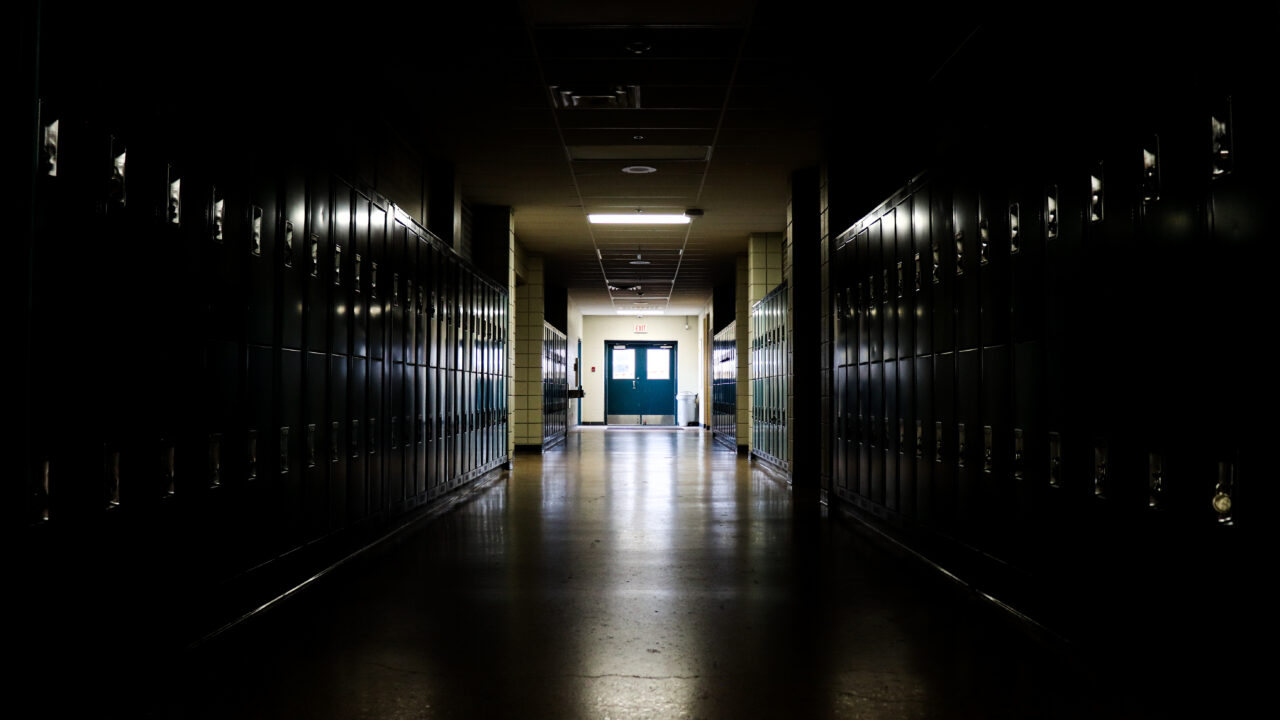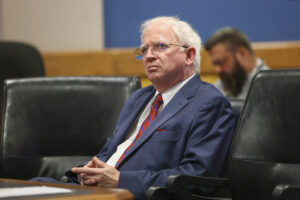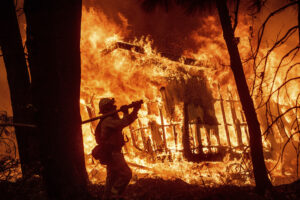Is the End of Public Schooling Near?
Inglewood, California’s gutted system previews a bleak future for American education. Image: Adobe
Image: Adobe
The question that’s hung uneasily over my hometown of Inglewood for years has now landed with a crash: Will we be a city with no public schools at all?
Two weeks ago, the county-appointed Inglewood Unified School District chief, James Moore, announced the decision to close five campuses by the end of the 2024-25 school year. That would make eight schools shuttered since 2019. In a 118-year-old city that once prided itself on its schools, this feels like an ongoing mass extinction event that will drastically alter the climate here, not for the better.
I realize we are not alone. All public schools experienced enrollment decline during and after the remote learning required by the COVID-19 pandemic. Neighboring Los Angeles Unified has shrunk precipitously, from 750,000 kids at its peak to about 450,000 now. The great vanishing of students has many factors and has rightly alarmed educators across the country.
But to feel the effects of the phenomena so personally, in real time, is painful. I wrote not long ago about the desolate look of my neighborhood elementary school, Century Park, a lovely, sprawling, very sleepy — because it’s nearly empty — campus that’s draped with colorful advertisements trying to convince old customers to come back, and to attract new ones. The school is a fixture in the neighborhood, a community service as essential as post offices, hospitals and libraries. Public schools are an integral part of the residential landscape, and in educating local kids they assure a viable future for everybody. I can’t imagine the neighborhood without them.
For decades there has been a broad attack on public schools, especially in urban settings.
In Inglewood, the timing of so many school closures is, at the very least, a jarring contrast with the high-profile growth that launched 10 years ago and is gaining exponential momentum. Since the SoFi stadium opened in 2020, the media has portrayed Inglewood as a city in dramatic turnaround. So-Fi has been touted as the crown jewel and catalyst of Inglewood’s transformation, with the local government doing much of the cheerleading. Inglewood Mayor James Butts has insisted for years that all these fantastic additions won’t cost taxpayers a dime, but given the history of the NFL’s demands of the communities where it builds stadiums (generally unglamorous, under-the-radar places like Inglewood), this strains credulity.
SoFi is just one part of a comprehensive redevelopment plan in the heart of town that includes condos, retail, restaurants, a spruced-up casino and another billion-dollar sports venue, the Intuit Dome, slated to open this year. It’s all happening as gentrification is blowing up home prices all over Los Angeles County and making once-moderately priced, chiefly Black and brown communities like Inglewood, prohibitively expensive.
Like our vanishing affordable housing, public schools now appear nonessential to all this so-called upgrading. Indeed, next to the glitz of SoFi and the like, our schools are a failed business that have no place in the new, exclusively business-oriented narrative of Inglewood progress.
But then, the people of Inglewood have no place in that narrative, either. As many residents have suggested in recent news coverage of the closures, all this development is happening without our needs in mind — the Black and brown working-to-middle class that Inglewood still comprises. Put another way, the decline of our public school system is just evidence of how those needs are routinely ignored.
For decades there has been a broad attack on public schools, especially in urban settings. Advocates of “school choice” have always framed their argument as simply one for quality: We need the best for our kids and public schools don’t provide it. It sounds neutral enough — what parent would argue against quality? But it’s a cynical trap.
Black parents have suffered the most from the country’s failure to desegregate and equalize schools, an effort that technically began 70 years ago with the Brown vs. Board of Education decision in 1954 that declared the doctrine of separate-but-equal in public schools unconstitutional. But decade after decade, meaningful integration failed to materialize, and it was Black communities — not the American public — that got blamed for Black schools that continued to flounder.
What’s been sold as empowering has been, for Black people as a whole, eviscerating.
By the ’90s the clear message to parents was “your school is hopelessly failing” (emphasis on your), a message reinforced by the federal No Child Left Behind Act of 2002 that clearly identified underperforming schools (code for Black and brown) without actually investing in reform. Schools like Inglewood’s were saddled, or re-saddled, with reputations of being losers, not to mention dangerous, and parents were implicitly urged to abandon them and get to the higher ground of charter or private schools, partaking of a swap-out strategy that was packaged as school ‘choice.’
What’s been sold as empowering has been, for Black people as a whole, eviscerating. Consider Ladera Heights, a middle-to-upper class community that’s 75% Black and next door to Inglewood and part of the Inglewood school district, which it joined at a time when Inglewood schools drew from a population that was once largely white. Ladera’s Black parents have a tradition of enrolling their kids in the neighborhood elementary schools, which they fully support, but long ago abandoned Inglewood’s middle and high schools, which are located down the hill in Inglewood proper. It’s part of a trend of Black middle-class flight that mimics white flight, meaning that many public schools have been abandoned twice. Talk about adding injury to injury.
The jump-ship mindset has allowed for the proliferation of charter schools. Long before the pandemic disappeared students, Inglewood public schools were losing out to charters. We have 10, a lot for a city that’s only nine square miles. Inglewood has tried at times to fight them off, but it hasn’t exactly been a fair fight.
Proposition 39, passed by California voters in 2000, greatly strengthened the hand of charters by mandating co-location with public schools, essentially giving them the right to exist under certain conditions and providing avenues of appeal if public schools objected. Charters were not the only reason for the hemorrhaging of the student population in Inglewood schools starting around 2000, but it was a big one. Pretty quickly, the district became one big fiscal crisis. In 2012, the state took it over after the district was forced to ask for a $29 million loan to keep operating.
After 12 years, Inglewood still owes $21 million. The district has to come up with an additional $500,000 annually to pay for state inspectors who measure progress, inspectors who are the key to approving fiscal health that will get Inglewood back to local control. The news isn’t all terrible. Moore, the district’s top authority appointed by the county, per the state takeover, says IUSD has met minimum standards on 127 benchmarks, but has 30 or so left. Given the accelerated rate of school closures, we may run out of time. At this point, Inglewood serves only 7,000 students across 16n schools, and Moore projects that 65% of school space will be empty by 2030.
Inglewood teachers and parents insist that this collapse wasn’t inevitable, that what’s always been missing is a sense that Inglewood schools were worth saving. It’s an argument that shouldn’t have to be made. Even after racial and middle-class flight, Inglewood had campuses that were models of effective public schools, including Kelso Elementary, one of the campuses on the chopping block that sits in the shadow of So-Fi.
Moore says he feels our pain of loss, but has repeatedly emphasized the damning numbers and how even in its diminished state Inglewood simply can’t afford all the things it needs, including new buildings, plumbing and repairs. “The data tell the story,” he said with a defeated air in his public announcement of the closures — meaning the data gives us no choice.
The latest closures, people say, conveniently clear the way for land grabs that will be used for more commercial development.
But we had choices long before we got to this point, choices we didn’t make. I can’t help but think of Naomi Klein’s concept of the “shock doctrine,” which describes how moments of disorienting crisis — war, natural disasters — are exploited by corporate entities who seek not to solve the crisis but to make a profit. Struggling public schools are a longstanding crisis that we’ve never come close to solving — intentionally — and now, undone by the data, we are being told in Inglewood we have to shutter the schools.
Many in Inglewood believe there is indeed a profit motive afoot. The latest closures, people say, conveniently clear the way for land grabs that will be used for more commercial development. Moore insists this isn’t true, as does Inglewood Mayor James Butts. Moore claims the extreme measures will aid the district by allowing Inglewood to provide more resources to the students who remain, and to maintain a traditional k-8 and 9-12 structure. He says there will be a $200 million investment in rehabbing Inglewood High School. The city’s other high school, Morningside, a huge campus a block or so from the Intuit Dome, is among those scheduled to close at the end of next year.
As it happens, the Morningside site will be rezoned for new housing built by a partnership between the city and a private developer, a partnership that formed a couple of years ago to begin redeveloping unused parcels of Morningside and Woodworth, a neighboring elementary school that’s also closed.
There is pushback to all of this educational entropy. FreDrisha Dixon, a lawyer and head of the Statewide Partnership for Local School Control, is leading an effort to pass state legislation that would help to restore Inglewood schools to local control. The California Public School Sovereignty Act seeks to repeal a 2018 law that, in part, requires the district in receivership to sell off its surplus property in order to repay the bailout loan it took from the state (the law at the time applied not just to Inglewood but to three other state-supervised districts, including Oakland and Vallejo). Again, time is of the essence. It’s not clear if such a law can be passed before Inglewood’s remaining schools are trimmed further and/or the district is totally dissolved.
It all makes for a unique tension in town, a growing feeling among citizens that as Inglewood is being made into a destination, it is losing its sense of place. It’s yet another false choice for people of color that we can ill afford to make.
Your support matters…Independent journalism is under threat and overshadowed by heavily funded mainstream media.
You can help level the playing field. Become a member.
Your tax-deductible contribution keeps us digging beneath the headlines to give you thought-provoking, investigative reporting and analysis that unearths what's really happening- without compromise.
Give today to support our courageous, independent journalists.






You need to be a supporter to comment.
There are currently no responses to this article.
Be the first to respond.